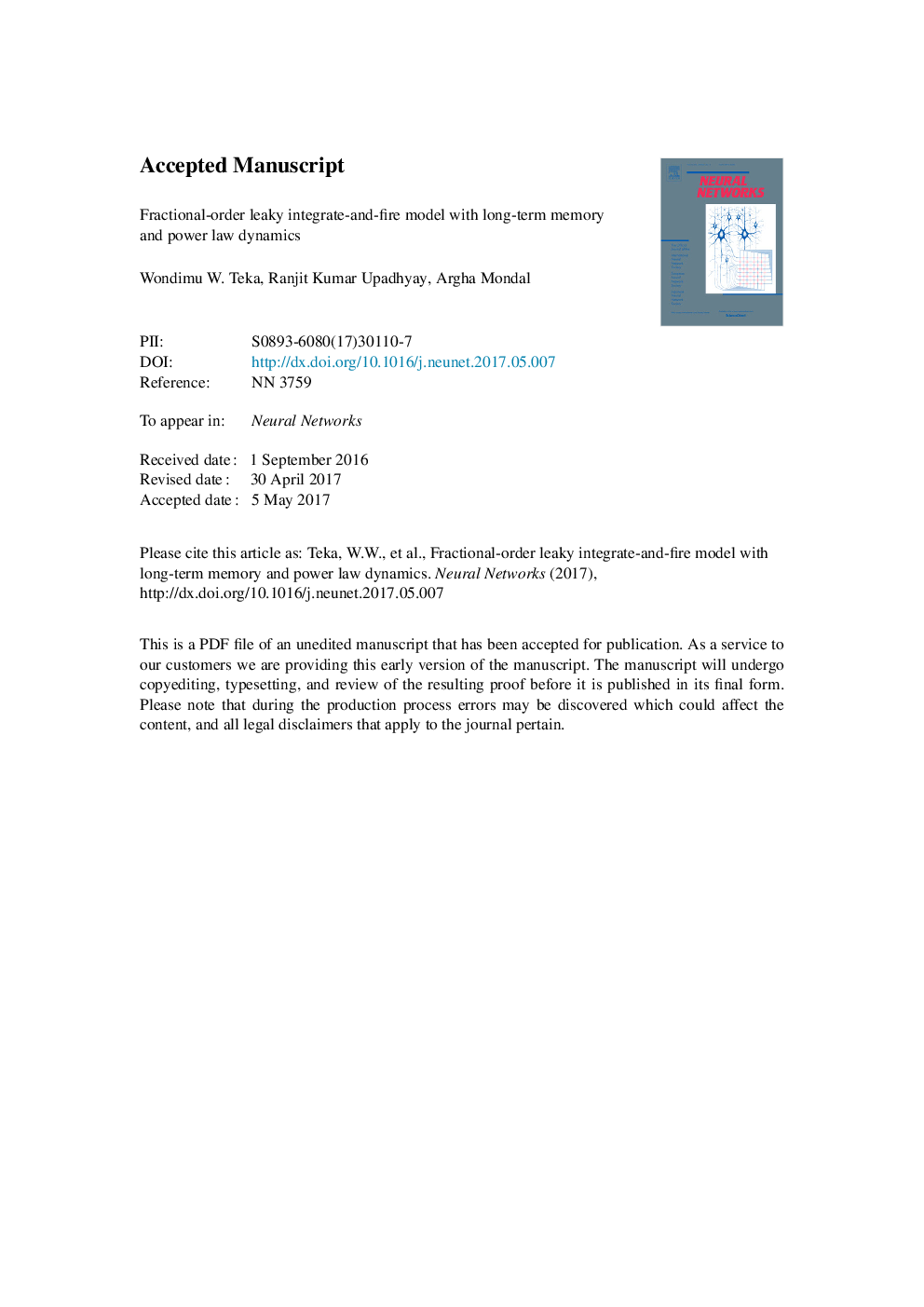| Article ID | Journal | Published Year | Pages | File Type |
|---|---|---|---|---|
| 4946618 | Neural Networks | 2017 | 47 Pages |
Abstract
Pyramidal neurons produce different spiking patterns to process information, communicate with each other and transform information. These spiking patterns have complex and multiple time scale dynamics that have been described with the fractional-order leaky integrate-and-Fire (FLIF) model. Models with fractional (non-integer) order differentiation that generalize power law dynamics can be used to describe complex temporal voltage dynamics. The main characteristic of FLIF model is that it depends on all past values of the voltage that causes long-term memory. The model produces spikes with high interspike interval variability and displays several spiking properties such as upward spike-frequency adaptation and long spike latency in response to a constant stimulus. We show that the subthreshold voltage and the firing rate of the fractional-order model make transitions from exponential to power law dynamics when the fractional order α decreases from 1 to smaller values. The firing rate displays different types of spike timing adaptation caused by changes on initial values. We also show that the voltage-memory trace and fractional coefficient are the causes of these different types of spiking properties. The voltage-memory trace that represents the long-term memory has a feedback regulatory mechanism and affects spiking activity. The results suggest that fractional-order models might be appropriate for understanding multiple time scale neuronal dynamics. Overall, a neuron with fractional dynamics displays history dependent activities that might be very useful and powerful for effective information processing.
Keywords
Related Topics
Physical Sciences and Engineering
Computer Science
Artificial Intelligence
Authors
Wondimu W. Teka, Ranjit Kumar Upadhyay, Argha Mondal,
